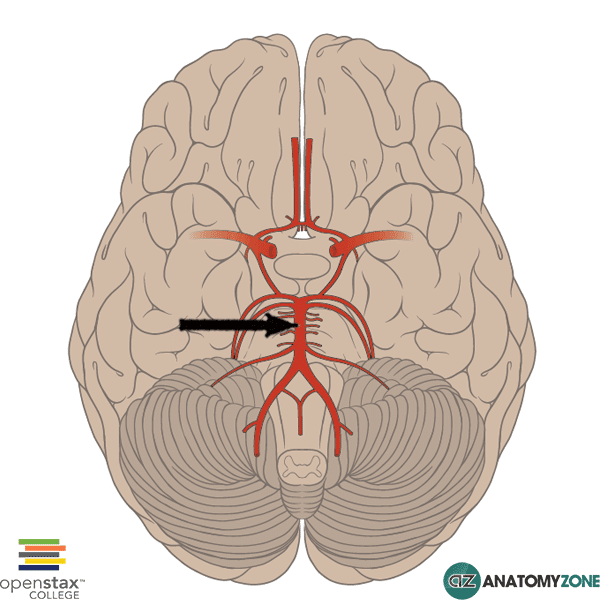Basilar Artery
The structure indicated is the basilar artery.
The basilar artery is formed from the union of the two vertebral arteries on either side. The vertebral arteries arise from the first part of the subclavian artery. Two other arteries are given off from the first part of the subclavian artery – the internal thoracic artery and the thyrocervical trunk. The vertebral and internal carotid arteries provide the arterial supply to the brain, forming the Circle of Willis at the base of the brain.
After the vertebral artery is given off from the subclavian artery, it passes through the transverse foramina of cervical vertebrae C1 to C6. It then enters the skull via the foramen magnum. The vertebral arteries unit to form the basilar artery at the junction between the medulla oblongata and pons. The basilar artery then ascends ventrally on the brainstem and terminates by dividing into the posterior cerebral arteries.
Branches:
- Pontine branches
- Superior cerebellar artery
- Anterior inferior cerebellar artery (the posterior inferior cerebellar artery arises from the vertebral artery)
- Labyrinthine artery (often arises from the anterior inferior cerebellar artery)
Learn more about the anatomy of the Circle of Willis in this tutorial
